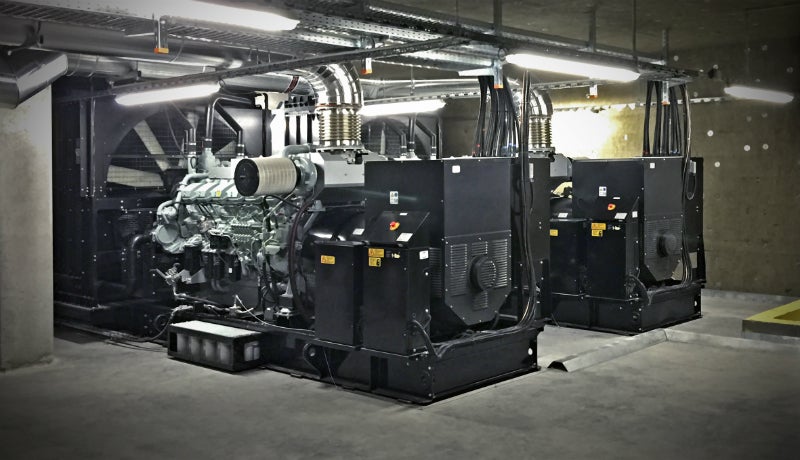
HIMOINSA supplied a redundant emergency power supply for one of the world’s most advanced surgical centres.
The complexity of the project required HIMOINSA to conduct a thorough analysis, both of the design and manufacture, and of the installation of the equipment. In addition to the sensitivity involved in working with a hospital, in France there is a host of environmental and power supply safety legislation, which made development complicated in terms of engineering, adapting each part of the process to technical and legal requirements.
The University Hospital Institute (UHI) is the new part of Strasbourg Civil Hospital for the treatment of gastrointestinal disorders, a leading centre in image-guided and minimally invasive surgery. The new building that houses the Institute, which is equipped with cutting-edge surgical technology, is connected to two separate power grids. The power supply is distributed with separate loads that are combined in a common busbar.
Under French standard NF61940-37312, hospital facilities of this kind are required to:
- have a redundant emergency power supply;
- ensure continuous power supply during transformer maintenance.
HIMOINSA therefore supplied two generator sets supplying 1,550 kVA in stand-by, synchronised with each of the grids and programmed with a parallel start-up system. Both generator sets start up synchronously and accept 100% of the load in 10 seconds, but only one of the units continues to function in an emergency, once the power supply is secured.
Objective
The project required emergency generator sets that are capable of synchronising with two separate power grids and that, in the event of an outage on either grid, can supply 1,550kVA of power in 10 seconds. The installation must comply with French legislation on noise emissions and environmental legislation, and ensure a secure power supply during transformer maintenance on the main grids.
Solution
HIMOINSA guaranteed continuous power supply with a synchronised start-up system. Up to 2.4MW of power can be supplied, double the current needs of this new part of the hospital. By installing load demand-based management or wattmetric management, the control units detect existing demand. If this exceeds a set threshold, both generator sets work in parallel to supply up to 3,100kVA of power at specific times to cover demand peaks.
Technical specifications
Two HTW1550 T5 generator sets with Mitsubishi engines were supplied. They are emissions-compliant models that comply with French law No 2910, which requires engines, between 2 and 20 thermal MW, to meet NOx and HCH emissions limits.
The control systems are redundant with two control units in each generator set, so that the generator sets can continue to function if either of them breaks down. In addition, the installation includes a programmable logic controller, or PLC, which regulates the complex operating system. All electrical parameters, both of the installation and of the generator sets, can be viewed from a remote screen.
Another challenge of the project was to secure the hospital’s power supply during the annual maintenance required by French law for transformers on major grids. HIMOINSA planned a complex system that involves controlling a large number of low-voltage inputs and outputs to ensure the safety both of the machinery and of those working at the facility during this maintenance.
Double silencer system
A double exhaust silencer system was incorporated, which maintains the backpressure of the equipment and ensures minimal noise.
To minimise noise pollution, the sealed room in which the generator sets are located was completely soundproofed, including motorised grilles in the air vents to cool the room, and bushings, which absorb vibrations from the generator sets and the structure supporting the silencers.

